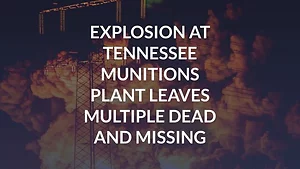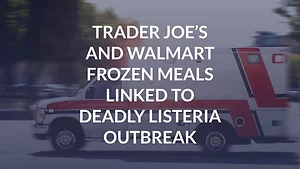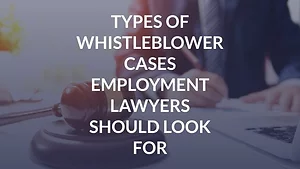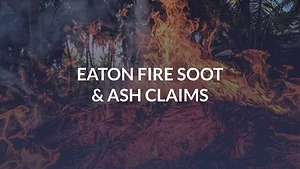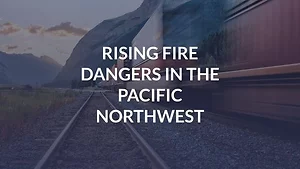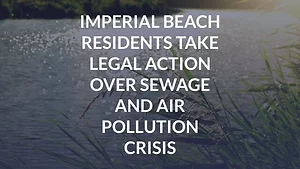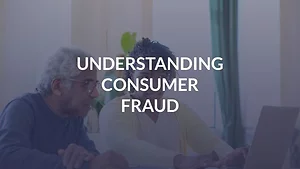An explosion at a military munitions facility in McEwen, Tennessee, left multiple people dead and several others missing on Friday, October 10, 2025. The blast occurred at Accurate Energetic Systems, a company that manufactures and tests explosives across an eight-building complex in rural Humphreys County, about 60 miles southwest of Nashville.
The names of 16 people who are presumed dead in the massive blast have been released. The victims are: Jason Adams, Erick Anderson, Billy Baker, Adam Boatman, Christopher Clark, Mindy Clifton, James Cook, Reyna Gillahan, LaTeisha Mays ...
A nationwide listeria outbreak tied to pre-made frozen pasta meals has led to four deaths, multiple hospitalizations, and a sweeping investigation by federal food safety officials. The outbreak, which has spread to at least 15 states, has been linked to meals sold at Walmart, Kroger, and Trader Joe’s under brand names such as Marketside, Home Chef, and Trader Joe’s own line of products.
November 2025 Update:
Federal health officials have reported new developments in the ongoing listeria outbreak connected to pre-cooked pasta meals distributed by Nate’s Fine Foods ...
Employment lawyers often play a critical role in helping employees raise concerns safely and effectively. Whistleblower claims can arise in any sector, but there are particular opportunities for employees in healthcare, government contracting, recipients of federal funds, and participants in federal programs. These cases not only affect the employees involved but also protect public funds, ensure patient safety, and promote accountability in industries that impact millions of lives. Understanding the typical scenarios and legal protections in each sector allows lawyers ...
In today’s digital age, children are spending more time on social media, gaming platforms, and virtual worlds, which provide opportunities but also risks from online predators. In their blog post “Protecting Your Child from Online Predators: Essential Tips for Keeping Kids Safe on Digital Platforms,” Singleton Schreiber attorneys Marisa Ong and Kristina Aiad-Toss explain how platforms like Roblox have become breeding grounds for predators due to weak safety measures. They offer key tips for parents, including monitoring online activity, understanding platforms, talking openly about safety, watching for behavior changes, and reporting inappropriate content, while emphasizing that companies have a duty to protect children from foreseeable harm.
The devastating Eaton Fire tore through communities in Altadena and Pasadena, leaving 19 lives lost, nearly 9,500 structures destroyed, and thousands of businesses disrupted. In response, Southern California Edison (SCE) has announced a new compensation program designed to provide direct payments to survivors.
While the promise of fast relief may sound appealing, victims should be cautious. Programs like this may come with hidden trade-offs that may impact their ability to fully recover what they lost.
What is the SCE Eaton Fire Compensation Program
SCE’s newly announced ...
A recent investigation by The Wall Street Journal has revealed a pattern of toxic fume events aboard commercial aircraft where air contaminated by chemicals such as fuel, hydraulic fluid, and lubricating oils seep into the cabin’s air supply.
These leaks occur due to a design element known as ‘bleed air’ in which the air that you breathe is pulled through the aircraft’s engine. Oils can enter the air when seals wear out, where they are vaporized by the heat and release a number of toxic compounds into the air that is then circulated into the aircraft cabin. This ‘bleed air’ ...
The Eaton Fire burned over 14,000 acres between January 7 and January 31, 2025, in the foothills of the San Gabriel Mountains. In its wake, 18 people died, and nearly 9,500 structures were destroyed. Fueled by dry brush and intense Santa Ana winds, the fire spread quickly and affected residents for miles beyond the burn zone. The strong winds carried soot and ash for miles, blanketing homes, vehicles, and businesses across Los Angeles County and surrounding areas. Many property owners who were never in evacuation zones still suffered serious damage.
How Soot and Ash Can Affect Your ...
Wildfires have always been part of the Pacific Northwest’s landscape, but recent years have shown just how devastating they can become. Rising temperatures, prolonged droughts, and high winds have created conditions where a single spark can fuel massive destruction. While many fires start from lightning strikes or human activity, another significant source of ignition comes from railroads and utility companies. Trains and electrical infrastructure move through some of the most fire-prone areas of Washington and Oregon, and their operations can pose serious risks if not ...
For decades, the Tijuana River has carried millions of gallons of untreated sewage and industrial waste from Mexico into San Diego’s South Bay. This toxic flow empties into the Pacific Ocean, causing more than 1,300 consecutive days of beach closures and exposing nearby communities to dangerous levels of pollution.
Residents of Imperial Beach and surrounding neighborhoods have long reported foul odors, eye and throat irritation, respiratory problems, fatigue, and persistent headaches. New scientific research confirms what locals have been saying for years: that sewage ...
Consumer fraud is an ever-growing threat that affects millions of Americans each year. Recent data shows that one in three people has been scammed in the past year alone, with Americans losing over $12.5 billion to fraud – a staggering 25% increase from the previous year. These numbers reveal not only the widespread reach of scams but also their evolving nature, becoming more sophisticated and difficult to detect.
Consumer fraud occurs when someone uses deception to steal your money or personal information. Scammers often impersonate trusted companies or government agencies to ...

